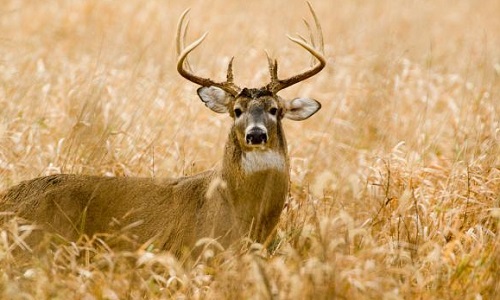With Missouri’s archery deer-hunting season already underway and firearms season starting in mid-November, a University of Missouri Health Care trauma surgeon cautions hunters to take safety precautions, especially in deer stands.
“I’m an avid hunter and outdoorsman myself, so I always look forward to both the archery and firearms portions of deer season,” said Jacob Quick, M.D., a trauma surgeon at University Hospital’s Frank L. Mitchell Jr., M.D., Trauma Center and assistant professor of acute care surgery at the MU School of Medicine. “However, as a trauma surgeon, I’m also part of a team that treats about 40 patients each year with hunting-related injuries, and most are caused by falls from tree stands. We’ve recently treated a few hunters for serious injuries sustained from these types of falls, and we anticipate that number rising, especially during the popular firearms season.”
Approximately 500,000 Missourians deer hunt each year. Many use elevated tree stands to provide a clearer view during hunting.
“Tree stands offer a better vantage point for hunters by expanding their field of view,” Quick said. “However, this usually puts the hunter at least 15 feet off the ground. A fall from even 10 feet can be devastating ― especially if the hunter lands on something other than just the ground, such as hunting gear, brush or a tree stump. This can cause serious injuries to the head, neck, and spine that may result in paralysis or even death.”
Quick said that tree stand falls usually are caused by improper safety procedures, such as attempting to climb up or down a ladder one-handed while carrying gear in the other. However, use of a proper safety harness would prevent most fall injuries.
“A full-body safety harness really is key to remaining safe in a tree stand,” Quick said. “The injuries we treat from tree stand falls are caused by people who fell because they were not wearing a harness.”
For longtime hunter Brandon Stallo of Columbia, Missouri, this common mistake almost made the 2014 hunting season his last.
“It happened on Nov. 1 that year during bow season,” Stallo said. “I was hanging a new stand, and although I always wear a safety harness, I didn’t use one that day. I thought it would just take a little time to set up the stand, so I didn’t attach the harness. I don’t remember much more after that until the ambulance arrived.”
Stallo fell about 20 feet to the ground, fracturing his spine and severing major blood vessels in his abdomen. After being transported to University Hospital’s Level I trauma center, immediate surgery was needed to keep him from bleeding to death internally.
“I spent 16 days in University Hospital ― three of them in the surgical intensive care unit ― and underwent two surgeries,” Stallo said. “It took me four months to recover from this accident. Even though I’m back to where I was before physically, it did change my life. I feel very lucky because it could have been so much worse.”
“Brandon sustained injuries as a result of his fall that were so devastating they almost ended his life,” Quick said. “I think his story is an example that none of us is so experienced that we don’t need to use a safety harness. It can happen to anyone. The more time you spend in the woods and use tree stands, the more chances you have of experiencing a fall.”
Safety tips for tree stands
Tree stands offer a better vantage point, a larger field of view and an earlier view of game than hunting on the ground. However, tree stands also are a contributing factor to many accidents during deer hunting season.
- Practice with your stand at ground level, gradually going higher. Several Conservation Department shooting ranges and outdoor education centers have practice poles for free public use.
- Use proper procedures for securing the stand to a tree.
- Read the warnings and instructions from the stand manufacturer before each season.
- Use only stands meeting the standards of the Treestand Manufacturers Association (TMA) rated for your weight and all your equipment you wear or have with you on the stand.
- Always use a safety harness that meets TMA standards and is rated for your weight and any gear you wear.
- Attach your safety harness to the tree from when you leave the ground, throughout the hunt and when you descend to the ground.
- Always position yourself so that you step down onto your tree stand to test its stability.
- Never climb a tree with a loaded gun or arrow ready to shoot.
- Always use a haul line to raise or lower your gear, including unloaded firearms, bows, and arrows.







